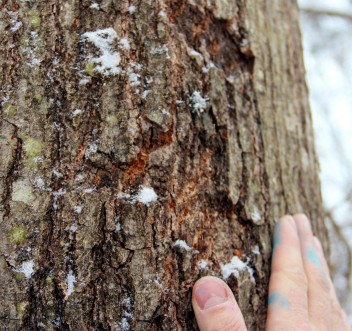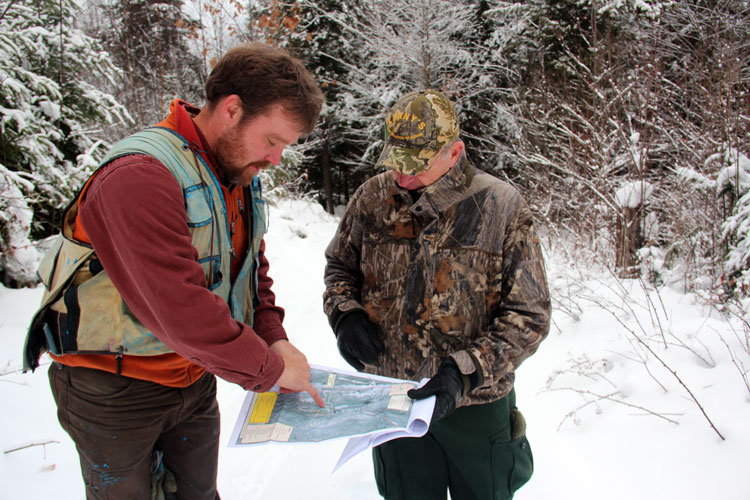Robert Wernecke contacted Redstart in 2010 to ask for assistance in managing his 80-acre woodlot in Ryegate, Vermont. Like the majority of the forested parcels that Redstart manages, Robert’s land is enrolled in the Use Value Appraisal Program, commonly known as Current Use.
A savvy landowner, Robert understands the bigger picture: that managing land actively not only provides property tax relief, but a host of additional benefits. With the help of Redstart’s Markus Bradley, Robert began to develop and execute a management plan that would maximize those benefits.
 Effectively Executing a Timber Sale
Effectively Executing a Timber Sale
In 2012, Redstart oversaw a timber sale on Robert’s property. To ensure good management practices and maximize profit, Markus served as Robert’s agent in this sale. As agent, Markus selected the trees which were to be removed, helped Robert choose a logging contractor to complete the harvest, negotiated a timber sale contract between Robert and the logger, conducted on-the-ground inspections during the harvest, monitored the finances of the job, and ensured the project was closed out properly when the work was completed. The logging generated mostly white pine, spruce, and fir sawlogs and a smaller amount of mixed hardwood sawlogs, white pine biomass, and hardwood firewood.
Updating the Current Use Management Plan
As part of maintaining active enrollment in the Current Use Program, a forestry parcel is required to have a written forest management plan, prepared by a forester and updated every ten years, to guide the management activities in the forest. In 2014, Redstart re-inventoried Robert’s property and updated the forest management plan and corresponding map. The plan allows not only for active enrollment in current use, but additional income from timber sales, firewood for home heating, and continued forest health.
The updated plan schedules additional logging on the property for 2017. At this time, loggers will remove poor quality red maple and release fir regeneration. A 2-acre patch cut will be made, to develop some early successional habitat for wildlife. And Robert will be permitted to harvest a small amount of firewood from his property for personal use. Other suggested pre-commercial activities include the release of oak poles and the treatment of non-native invasive plants.
Managing Invasive Plants
In 2014, Robert asked Redstart to treat non-native Japanese barberry and honeysuckle plants that were found on his property during the forest inventory. These plants have the ability to quickly invade forest understories and outcompete native regeneration. The logging scheduled on the property in 2017 made the treatment of invasives particularly important. Logging often allows an increased amount of sunlight to reach the understory, giving invasive plants the fuel they need to spread faster, increasing their area of coverage. Redstart successfully implemented a non-invasive treatment plan on Roberts woodlot, reducing the possibility of their spread.
 Preparing a Forest for a Healthy Future
Preparing a Forest for a Healthy Future
Redstart’s collaborative work with Robert Wernecke has enabled him to do more than harvest and sell his timber while reducing his property tax obligation. With the help of Redstart, his woodlot will maintain its health and productivity well into the future. This is the kind of active stewardship that Redstart is proud to help its customers achieve.

